Hermosillo, Sinaloa 作者: 来源: 发布时间:2021-11-11
1.Population and Area
Pop: 812,229 (city)
Area: 168.20 km2 (city)
Elev: 200 masl
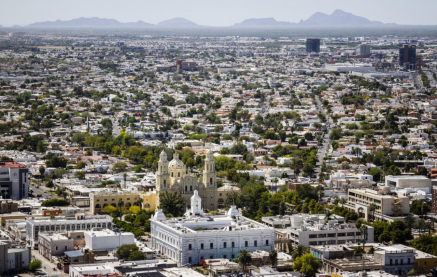
Hermosillo location in Mexico within the state of Sonora
https://goo.gl/maps/7ZcdshoYSAq4iJ9c9
2. Natural geography
Nature and weather
Hydrography
The two most important rivers are the Sonora and the San Miguel. Both of these are used for irrigation purposes with the Abelardo L. Rodriguez Dam located on the San Miguel River.[3] The population increase of the municipality, currently at 2.5% annually, puts pressure on the infrastructure of the city, especially its water supply. Decades of overpumping of ground water has led to the aquifer levels being lower than sea levels, and sea water creeping in as an "artificial recharge."
Flora and fauna
It has a great variety of flora species. There is a wide range of xerórilas plants, such as saguaros, and trees such as mesquite, palo blanco, ironwood, palo verde and torote, since they have adaptation systems such as growing on the shore of streams and on the slopes of the hills, not being too high to counteract the force of the wind and having very hard wood and long roots that penetrate the earth until they find a water reservoir. At high places we can also find evergreen trees such as pine, fir and oak.
The fauna of Hermosillo is rich and varied, and the following can be counted as main animals, grouped by species:
Mammals: squirrel, wild sheep, pronghorn, mountain goat, cacomixtle, rabbit, coyote, whose, wildcat, wild boar, jaguar, hare, ounce, puma, rat, badger, tiger, deer, fox, desert turtle, white-winged dove and skunk.
Birds: agachona, harrier, lark, gannet, owl, roadrunner, huitlacoche, chachalaca, pennant, water hen, heron, hawk, seagull, ganga, huilota, falcon, fly bird, red saltapared, turtledove, quail.
Fish: carp, tilapia.
https://www.hermosillo.gob.mx/pages/datos-ambientales/index.html
http://hermosillo-historia.blogspot.com/p/flora-y-fauna.html#:~:text=La%20fauna%20de%20Sonora%20es,%2C%20venada%2C%20zorra%20y%20zorrillo.
Köppen Classification: Tropical and Subtropical Desert Climate
This climate is dominated in all months by the subtropical anticyclon, or subtropical high, with its descending air, elevated inversions, and clear skies. Such an atmospheric environment inhibits precipitation. Most of Earth's tropical, true desert climates occur between 15° and 30° latitude. The most extreme arid areas also are far removed from sources of moisture-bearing winds in the interiors of continents and are best developed on the western sides of continents, where the subtropical anticyclone shows its most intense development. An exception to the general tendency for aridity to be associated with subsidence is in the Horn of Africa region, where the dryness of Somalia is caused more by the orientation of the landmass in relation to the atmospheric circulation. Both the high- and low-sun monsoonal winds blow parallel to the coast, so that moisture-laden maritime air can penetrate over land only infrequently.
The Köppen Climate Classification subtype for this climate is "Bwh". (Tropical and Subtropical Desert Climate).
The average temperature for the year in Hermosillo is 75.7°F (24.3°C). The warmest month, on average, is July with an average temperature of 90.0°F (32.2°C). The coolest month on average is January, with an average temperature of 60.8°F (16°C).
The highest recorded temperature in Hermosillo is 114.8°F (46°C), which was recorded in May. The lowest recorded temperature in Hermosillo is 24.8°F (-4°C), which was recorded in December.
The average amount of precipitation for the year in Hermosillo is 12.0" (304.8 mm). The month with the most precipitation on average is July with 3.2" (81.3 mm) of precipitation. The month with the least precipitation on average is April with an average of 0.1" (2.5 mm). In terms of liquid precipitation, there are an average of 29.2 days of rain, with the most rain occurring in July with 7.8 days of rain, and the least rain occurring in June with 0.4 days of rain.
https://www.weatherbase.com/weather/weather-summary.php3?s=6167&cityname=Hermosillo%2C+Sonora%2C+Mexico&units=
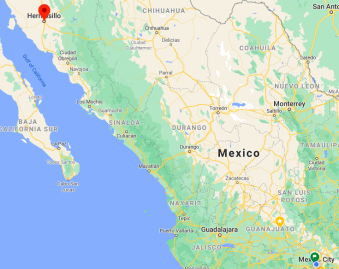
Getting there and around
Get there
By plane
Hermosillo's International Airport (General Ignacio Pesqueira Garcia), IATA: HMO, is one of the busiest in Mexico, as it is in the centre of Mexico's northwest and has scheduled flights from/to the US cities of Phoenix, and Los Angeles. Domestic origins include: Chihuahua, Cd. Juárez, Cd. Obregón, Culiacán, Guadalajara, Los Mochis, Mazatlán, Mexicali, Mexico City, Monterrey, Tijuana and Torreón.
Also, small regional and charter airlines provide service to the following destinations:
Guasave
Guaymas
Guerrero Negro
Facilities are ready to receive aircraft as large as Boeing's 777. If you are close to the border (Tijuana, Ciudad Juarez) check flights leaving out of those airports in Mexico, they are generally cheaper than flights from US cities into Hermosillo.
Low air-fare providers are Interjet and Volaris; while Viva-aerobus is the cheapest of them all beware of the airline policies for it won’t give any protection for any delays or cancellations.
By car
Hermosillo is about a 7 1/2-hour drive from Phoenix, Arizona, about 4 to 4 1/2 hours from Tucson, and about 3 hours from Nogales, Sonora. That is assuming you drive the speed limit. It is not unheard of to have the previous mentioned times to be much less when the border crossing is not congested.
The road from Nogales (on the border) down to Hermosillo is a well paved road. The portion of Highway 15 between Magdalena de Kino and Hermosillo is a toll road, keep your receipt as this is a form of insurance. To file a claim, you will need to return to the toll booth (either in Hermosillo or Magdalena). If you are bringing a car in from the United States of America, or Canada (including rental vehicles) you will need to have insurance through a Mexican company. On your Mexican insurance forms there should be a number for the "Angeles Verdes" (Green Angels) which is a roadside assistance service similar to AAA in the United States. Keep that number handy when you travel, Angeles Verdes drivers are bi-lingual and are very helpful.
Going to or coming to Hermosillo from Nogales you will encounter several checkpoints. On the north bound side there is a checkpoint manned 24 hours a day by the Mexican military. The soldiers posted at the stop sign who speak to the drivers are almost always able to speak enough English to deal with American and Canadian tourists. They will ask you where you are going, where you are coming from, and may ask to see your ID. Random and suspicious vehicles will be directed to a parking area to be searched, if you are selected to be searched the process normally takes less than 5 minutes (assuming you aren't carrying anything you shouldn't be). They will search through your bags, and the interior of your car. There may also be Federal Preventative Police (PFP) checkpoints, these checkpoints are often set up in different locations. Most PFP Police Officers will speak English but will normally wave through any vehicles with American or Canadian plates, so long as the occupants are obvious tourists (break out your straw hats, brown shoes, and black knee socks!)
By bus – The main bus terminal (Central Camionera) is located approx. 2km east of downtown on Blvd. Luis Encinas. It is well served with frequent north-south route. You can catch a local bus in front of the terminal to the downtown area (bus #1, 18, and 19. Fare: 6 pesos, exact change only).
There is also a daily departure at 6:30 by Estrella Blanca to Chihuahua through Yecora, Baseachi, and La Junta, that is useful if you are heading to Copper Canyon area. This route is quite expensive (748 pesos to Baseachi, June 2014) and Estrella Blanca website [2] doesn't list this route, so inquire locally.
TUFESA bus line runs from Arizona(Tucson, Phoenix, etc) to Hermosillo. Fares are around $49 one way from Phoenix, and vary based on other cities. The Hermosillo stop is on the Ciudad Obregon route.
https://wikitravel.org/en/Hermosillo
Car Rental – To explore Mexico’s provincial towns and cities—including its beach locations and the scenery and attractions near them— consider renting a car for your visit. Having your own car will give you more flexibility than using public transport options and, in some cases, offer you access to places which are otherwise difficult to visit without the use of a car.
COVID19 - International entry into Mexico from United States
Allowed for: All visitors arriving by air. Mexico land borders are closed to non-essential travel
Restricted for: There are no current restrictions.
Get around
By car
When you arrive in Hermosillo be on the lookout for topes, or speedbumps. Not all topes are marked (a yellow sign with a black speedbump) or painted yellow, pay particular attention at night as they are not always visible, and you may leave your engine on the street.
People in Hermosillo tend to drive somewhat recklessly, particularly the bus drivers. Red lights, stop signs, and speed limits are often treated as suggestions rather than law. Be careful of vehicles coming from side streets, they normally have stop signs, but sometimes will not stop until their car is already halfway in the nearest lane. Traffic lights are like most others in Mexico, where the green light will flash before it turns to yellow, and then red. Passing through a yellow light is a violation, there is no delay from when your light turns red to the other light turning green as there normally is in the United States. When you see the light flashing green be prepared to stop. Many intersections will have stop signs in addition to the lights, if the light is green you do not have to stop, this can be confusing to some people who have never encountered this setup before.
Local Buses – Local buses and mini-buses (combis or micros) are available locally for a fraction of the cost of a taxi around town. You need to speak Spanish to be able to ask for directions or ask the driver to tell you where to get off.
The driver does not handle fare, but instead you need to insert exact amount of fare into a machine or pay with a contactless smart card. Bus Sonora has a list of bus lines and bus location system (which hasn't really worked yet but route map is useful). The service is frequent and if you see older bus coming, it may worth wait for another one with A/C.
During weekend evening, there's a trolley bus tour that goes out just in front of the Metropolitan Cathedral of Hermosillo right in the city center. It will take you to the best sight seeings and landscapes of the city.
Taxis – Taxis in most of Mexico’s towns and cities are not metered, so agree your price before you get in. Taxi travel is very affordable in Mexico, in comparison to the USA, Canada and Europe, and so provides a viable means of public transportation in Mexico. Your hotel can arrange taxis for you; some post their rates on a board in the lobby; taxi hotel rates are usually higher than cabs you hail off the street. If you speak Spanish, you will have a distinct advantage and be able to negotiate a price with the driver.
Uber is expanding rapidly across Mexico and now offers services in cities across the country, including: Mexico City, Toluca, Cuernavaca, Puebla, Querétaro, León, Aguascalientes, San Luis Potosí, Guadalajara, Monterrey, Hermosillo, Tijuana, Mexicali, and Mérida. Uber has been adding Mexican cities to its network every year, check for availability when you arrive at your destination in Mexico.
Cabify and Didi are also developing and currently operate in cities including Mexico City, Toluca, Monterrey, Puebla, Querétaro and Tijuana. Check for availability in the city you are visiting.
These services offer people with smartphones a way to book a cab through a mobile app for a pre-agreed price. Fares are comparable with Sitio type cabs, and sometimes trade at a premium to this when local demand increases.
https://wikitravel.org/en/Hermosillo
https://www.mexperience.com/transport/taxi-travel-in-mexico/#51
3. ECONOMY
GDP: 64 612.7 M MXN (2010)
https://dialnet.unirioja.es/descarga/articulo/4954700.pdf
4. Industry characteristics
Most of the municipality's population lives in the city proper, with most jobs located in the manufacturing and commerce sectors here. About 250,000 hectares are under cultivation in the city's outskirts, most of which is near the coast. Crops include wheat, grapes, flowers, chickpeas, alfalfa and walnuts. Livestock has been traditionally important here, especially beef cattle. Pigs, sheep, goats, horses, domestic fowl and bees are also raised here as well. Fishing is practiced along the coast with shrimp being the most important catch.
Industry and manufacturing has been the most dynamic sector of the economy. Much of this began in the 1980s with the establishment of the automobile industry, specifically the Hermosillo Stamping & Assembly plant owned and operated by Ford Motor Company. Electronics and IT are the largest employers by both revenue and number of employees. Today, there are twenty-six major manufacturers, which generate about 68,300 jobs, employing about thirty percent of the population.
Other than cars, products manufactured here include televisions, computers, food processing, textiles, wood products, printing, cellular phones, chemicals, petroleum products and plastics. Lanix electronics has a major research and design facility and its main manufacturing plant in Hermosillo. The city and its municipality have twelve industrial parks, which house over one hundred smaller manufacturing enterprises. There has been slowing of this sector especially the automobile industry because of the global economic downturn that began in 2008.
Commerce employs more than half of the population; besides small local businesses, chains are well represented; these are locally, regionally (Northwest Mexico), nationally, and U.S.-based. Tourism is mostly limited to the coastal communities of Bahia de Kino, Kino Nuevo and Punta Chueca, where there are cave paintings and a recreational park named La Sauceda. In 2009, Standard & Poor's rated the municipality of Hermosillo as (mxA/Estable/-) based on its administrative practices, financial flexibility and limited financial risks. Financial management of the municipality has been prudent, with adequate documentation of practices. Debt levels have also been prudent at about 33% of gross income, which might decline in 2010. However, the municipality has limited liquid capital.
Key project: Hermosillo Branch gas pipeline
The project consisted of a gas pipeline with a capacity of 100 million cubic feet per day (MMPCD). The approximate length of the gas pipeline is 48 km and 16 inches in diameter.
The Ramal Hermosillo gas pipeline will transport natural gas from the Sásabe-Guaymas gas pipeline to the Hermosillo combined cycle plant in the state of Sonora.
It is a public and private collaboration project, although the investment was entirely from the contracted company, with a 25-year operating concession for it. The total investment of the project was approximately 13 million dollars.
The positive outcomes of the Project so far have been:
Economic spill and direct and indirect jobs during the construction.
Generation of new jobs with the arrival of natural gas to new economic regions.
Sustainability and environmental improvement with the use of a more efficient and environmentally friendly fuel.
Improvement of the standard of living and social conditions in the communities that establish productive projects and companies in the areas where natural gas is distributed.
Improvement in the use of income in areas where gas is distributed for domestic use.
Greater competitiveness in the field due to access to natural gas for agro-industrial processes.
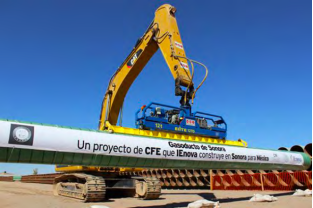
https://www.gob.mx/cms/uploads/attachment/file/315811/Informaci_n_sobre_el_Gasoducto_Sonora_en_su_Segmento_Guaymas_-_El_Oro.pdf
https://www.proyectosmexico.gob.mx/proyecto_inversion/773-cfe-gasoducto-ramal-hermosillo
5. Attractions
Tiburón Island
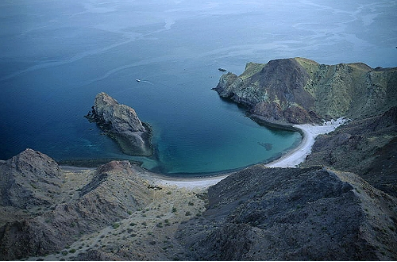
Tiburón Island is the largest island in the Gulf of California and the largest island in Mexico, with an area of 1,201 square kilometres (464 sq mi). It was made a nature reserve in 1963.
It is located along the eastern shore of the Gulf of California, opposite Isla Ángel de la Guarda. It is part of the chain of islands known as the Midriff Islands or Islas Grandes.
Tiburón Island is part of the traditional homeland of some bands (or clans) of the Seri people, for many centuries if not millennia. During the 1960s and early 1970s, a small hunting and fishing camp on the northern end of the island was operated by Jesus Olivas, a resident of Hermosillo. He constructed several buildings, a dock and an airstrip near the historic Seri encampment at Tecomate. The camp was popular with American visitors to the area. The remains of the structures and airstrip are still in place (although the airstrip was rendered unusable by the Mexican military around 1995 in an attempt to keep it from being used by smugglers active in the area at the time).
The island is uninhabited (except for Mexican military encampments on the eastern and southern shores of the island) and is administered as an ecological preserve by the Seri tribal government in conjunction with the federal government. Bighorn sheep were introduced to the island in the 1980s; hunting is managed by the tribal government in coordination with Mexican federal authorities. It is also home to subspecies of coyote (Canis latrans jamesi) and mule deer (Odocoileus hemionus sheldoni) that are found nowhere but the island.
https://en.wikipedia.org/wiki/Tibur%C3%B3n_Island
Sonora Art Museum
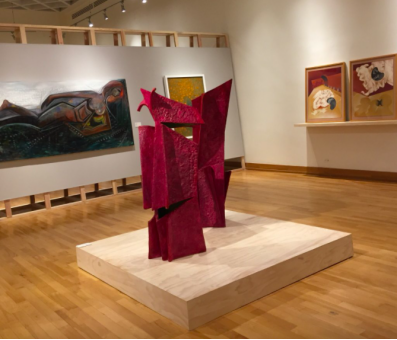
The Sonora Arte Museum (MUSAS, in Spanish) is a good option if you are looking for something different in terms of entertainment, the exhibitions are very varied from modern art to what could be a beautiful expression of Mexican culture through an exhibition of dolls showing the typical costumes of each region of the country.
MUSAS is the best modern art space in the state of Sonora. Its modern and well-kept facilities are divided into several areas. Most of them are dedicated to the rooms that house different temporary exhibitions. There is always an exhibition dedicated to Sonoran artists, so it does a good job of disseminating local talent, in addition to showing the works of prominent international artists. Recommended visit if you are in Hermosillo.
The MUSAS is a good example of what a good museum should have, modern facilities, clean and attractive at every turn.
https://www.tripadvisor.com.mx/Attraction_Review-g153979-d6697902-Reviews-Musas_Museo_De_Arte_De_Sonora-Hermosillo_Northern_Mexico.html
El Bachoco Hill
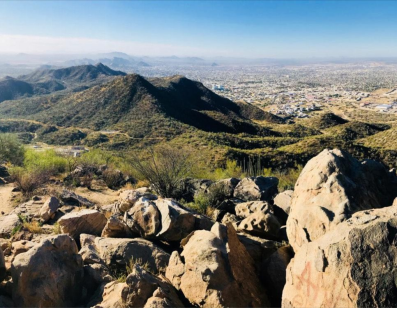
El Bachoco is a hill located north of Hermosillo, in the Mexican state of Sonora. With its 610 meters above sea level, 1 its summit is one of the highest points in the metropolitan area of the Sonoran capital. The Bachoco area is a popular place for sports recreation for the local population.
Although Bachoco and the adjacent hills are on private property, 3 the area effectively functions as a public park, with no access control or entry fee. It is popular for various sports activities, in particular mountain biking (in the lower parts) and hiking. The ascent to Bachoco allows, on its usual route, a drop of just under 300 meters in 2 km of travel.
The bachoco is a very accessible place to go to exercise in the city of Hermosillo, easy access and with very good tracks for MTB and HIKING. Its accessible topography hills and beautiful views of the city make the Bachoco hills a great place to visit.
https://es.wikipedia.org/wiki/El_Bachoco
https://www.tripadvisor.com.mx/Attraction_Review-g153979-d12726740-Reviews-or5-Cerro_El_Bachoco-Hermosillo_Northern_Mexico.html#REVIEWS
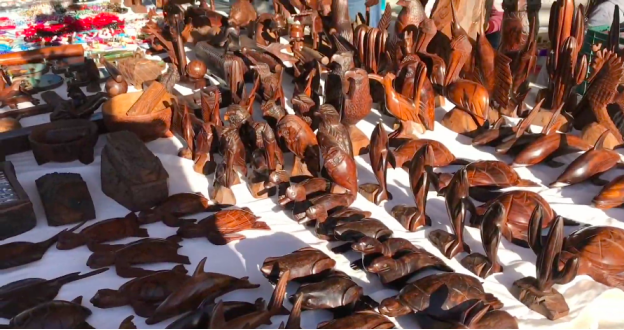
MEXICO - Christmas in Hermosillo! (1080p HD) | Magda T
https://youtu.be/XmVezS2-OdE
6. History
Evidence from a site called the San Dieguito Complex, located in the El Pinacate Zone, suggests the area has been inhabited for about 3,000 years. Evidence of agriculture dates back 2,500 years. In the pre-Hispanic era, this area was inhabited by the Seri, Tepoca, and Pima peoples.
The first encounter between the Spanish and the indigenous peoples of the area occurred in the middle of the 16th century, when European explorers were sent in search of nonexistent gold. The first missionaries arrived in the state of Sonora around 1614, and Eusebio Francisco Kino arrived in 1687, founding a mission in nearby Cucurpe. What are now the states of Sonora and Sinaloa, were loosely organized as the provinces of Sonora, Ostimura and Sinaloa.
In 1700, three small Spanish villages were founded in what is now the outskirts of Hermosillo: Nuestra Señora del Pópulo, Nuestra Señora de Los Angeles and la Santísima Trinidad del Pitic. The native peoples here soon became hostile to the colonists and managed to drive them out several times in the early 18th century. In 1716, the Spanish offered irrigated lands for farmers to the native peoples, who then agreed to abide by Spanish law. Around 1726, a fort named the Presidio of Pitic was constructed to stop the domination of this area by the natives, especially the Seri. However, the situation remained contentious, and the first church was not built until 1787 and the first formal parish was not established until 1822.
During the Mexican War of Independence, Sonora and the town of Pitic stayed loyal to the Spanish Crown. In fact, a general from this area, Alejo García Conde, defeated insurgent José María González Hermosillo, who had been sent here by Miguel Hidalgo y Costilla. In 1825, the village of Pitic was made the seat of the department of the same name. In 1828, the settlement changed its name to Hermosillo to honor José María González de Hermosillo. A battle between imperial and republican forces occurred here in 1866 during the French Intervention in Mexico. In 1879, the capital of the state of Sonora was moved from Arizpe to Hermosillo. In 1881 the railroad linking Hermosillo with Guaymas and Nogales was finished, allowing for economic expansion in the area by bringing in mining equipment and modern agricultural equipment. Since then, the city has been an economic center for northwest Mexico.
During the Mexican Revolution, forces loyal to Pancho Villa were repulsed by General Manuel M. Diéguez. After the assassination of Francisco I. Madero in 1913, Venustiano Carranza, then governor of Coahuila, sought refuge in Hermosillo. Here Carranza began the Constitutionalist Movement, and because of this, Hermosillo has the nickname of the "revolutionary capital of the country."
From the late 19th century and through the first two decades of the 20th, Chinese immigrants came into Sonora state. A significant number settled in the city of Hermosillo. Some of these immigrants established businesses, especially shoe manufacturing and clothing. Some of the most successful Chinese-owned businesses in Sonora were based in Hermosillo and sold their merchandise to other parts of the country. However, by the 1920s anti-Chinese sentiment had become strong in Sonora state, with many Chinese leaving for Mexico City or the United States.
In the 1980s, Ford built a plant here, which had a great impact on the city's and state's economy.
Hermosillo is the site of a tragic fire at the ABC child care center on June 5, 2009. According to the Procuraduría General de Justicia en el Estado (State Attorney General Office) of Sonora, 49 deaths were attributed to the fire at the ABC child care center. The fire apparently started at a car and tire depot, then spread to the child care center. Most of the children died of asphyxiation. There were about 100 children inside the building and firefighters had to knock holes in the walls to rescue the children, who ranged in age from six months to five years.
Origins
The origin of Hermosillo dates back to 1700, when the villages of Our Lady of The Pup, Our Lady of Angels and the Holy Trinity of Pitic, inhabited by yaquis, seris, tepocas and pimas bajo were founded.
Years earlier, internal difficulties had occurred among the Tepocas Indians with the low pimas and as a result, they had moved away from their duties.
The purpose of the city was to contain the Seris and Tepocas Indians, to protect the Hispanic expansion under the name of Real Presidio de San Pedro de la Conquista, named after the Viceroy Don Pedro de Castro y Figueroa, Duke of the Conquest and Marquis of Grace. The explorer in charge of the foundation of the peoples was John the Baptist of Escalante, who managed to pacify the situation, on May 18, 1700, giving a speech, of which this part is reproduced: Sending them to have no wars from now on, but to live as Christians and to deal with each other with fairs of the clothes of their use and seeds of their plantings, to which they responded from one and the other, which they would do thank ingsands thank ing best for the good that they made peace of way.’,
In 1718, on the orders of the governor Manuel de San Juan y Santa Cruz, the town of the Holy Trinity of Pitic was repopulated; on September 29, 1725 the sers settled in the Pópulo rose in the son of war and invaded the people of Opodepe. The sery were persecuted for the purpose of punishing them until they signed the peace in January 1726, and they were settled in the Porplo and in the points called Alares and Moraga; subsequently given the uncertainty due to the bellicoseness of the indigenous, the Pitic presidio was formed.
The Presidio of Saint Peter of the Conquest of the Pitic
In June 1741, Don Agustin of Vildósola established the presidio of St. Peter of the Conquest of the Pitic.
Nine years later the troops of the Pupium were transferred to El Pópulo, in the present municipality of San Miguel de Horcasitas. As a result of this action the Pitic was left in a very precarious situation, because several residents emigrated for fear of the Seris.
While the Presidio's settlement was about to disappear, senior authorities ordered a group of soldiers to remain on site to ensure the safety of their neighbours.
In 1772, the mayor Pedro de Corbalán ordered the construction of a canal on the left bank of the Rio Sonora, to irrigate the lands and orchards.
Pitic's Villa .A. Before the end of the eighteenth century the former Presidio of San Pedro de la Conquista del Pitic became Villa del Pitic.
On February 9, 1825, the Villa del Pitic was established as the head of the party, dependent on the department of Horcasitas. This coincided with the urbanization that the royal surveyors gave it, as it progressed steadily.
In 1827, the city had approximately eight thousand inhabitants, and its urbanization was very particular, as the houses were scattered in all directions. The region was fertile, well-cultivated and provided an abundance of what was necessary for life and even many luxuries. Already then it was, very cheap, high quality beef that to this day is famous.
The Village of Hermosillo
On September 5, 1828, by decree no. 77 of the H. Legislature of the State of the West, the name Villa del Pitic was deleted and the name of the City of Hermosillo was imposed, in honor of the general Jalisco-jalisciense José María González de Hermosillo who in the late 1810 had carried the task of the national insurrection to lands Sinaloa-Sinaloenses, then part of the Western State as well.
On March 12, 1831, the State of Sonora was founded and Hermosillo was its first capital from 14 May of that year to May 25, 1832, when the capital powers were transferred to the city of Arizpe. In 1837, the city was erected at the head of the district of its name. Also on that date Don Pascual Iñigo began the construction of the Chapel of Our Lady of Carmen.
He also points out that on October 14, 1852, in the city, a section of filibusters under the command of Gastón de Raousset-Boulbon faced and defeated the national forces, who were under the leadership of General Miguel Blanco de Estrada; this as part of a revolutionary campaign of independence that was intended to turn Sonora and Lower California into colonial territories France However, Raousset remained only a few days in the city, choosing to go to Guaymas to continue his campaign where he would eventually be defeated by General José María Yáñez Carrillo in the Battle of Guaymas (1854).
On May 4, 1866, under Second Mexican Empire of Maximilian of Habsburg, the republican troops commanded by the general Ángel Martínez attacked and seized the city, which was defended by Second Mexican Empire, under Colonel María Tranquilino Almada. However, a few hours later it fell back into the hands of the forces of the empire. On November 13, 1866, General Martinez again took the city again in blood and fire, causing the imperialists to flee, who regained it eight days later.
In 1879 Hermosillo was once again the headquarters of state powers, thanks to the management of the acting governor Don Francisco Serna, at least on an interim date. However, when the new Political Constitution of the State of Sonora was issued on September 15, 1917, it was definitively confirmed that the city of Hermosillo is the headquarters of the state powers, as referred to in article 28 thereof.
On November 4 in front of the wooden station of Sonora dozens of people gathered at the opening of the Guaymas-Hermosillo railway section. On the train came Don Carlos Rodrigo Ortiz Retes, accompanied by the commander of the Military Zone, brigadier Colonel José Guillermo Carbó. Months later, the cargo and passenger service would be established between Guaymas and the Nogales (Sonora)' Noals.
20th century
At the beginning of the 20th century, Hermosillo had about 14,000 inhabitants. During the Mexican Revolution, forces loyal to Francisco 'Pancho' Villa were expelled from the city by the General Manuel M. Diéguez. After the assassination of Francisco I. Madero in 1913, Venustiano Carranza, then governor of Coahuila sought refuge in Hermosillo. Here Carranza began the Constitutionalist Movement, because of this, Hermosillo has the nickname "the revolutionary capital of the country'".
In the late 19th century and the first two decades of the 20th century, Chinese immigrants arrived in Sonora. One of the settlements with a significant number was the city of Hermosillo. Some of these immigrants had money and used it to set up businesses, especially shoe and clothing manufacturing. Some of the most successful businesses with Chinese owners in Sonora were in Hermosillo and sold merchandise to other parts of the country. However, in the 20s a sentiment against the Chinese population in Sonora was strengthened, resulting in many fleeing to Mexico City or the United States.
In the 80s, Ford built Hermosillo Stamping & Assembly in the city, which had a major impact on the city's economy and the state. A whole chain of suppliers was also developed around the assembly plant, which further contributed to economic growth in Hermosillo. Hermosillo was selected due in part to her closeness to the United States.
21st century
In 2000 the businessman Pancho Búrquez was elected as municipal president for National Action, in that triennium, the municipality won national awards (such as that of the Secretariat of Comptroller ship and Administrative Development of the federal government, as well as of the International City/County Management Association as one of the most transparent cities in the world. Investment grew in the early decade thanks to the ease of doing business.
One of the most important events in Hermosillo was the event of the ABC Nursery Fire on June 5, 2009. According to the Attorney General's Office of the State of Sonora, there were 49 deaths in the ABC nursery fire. The fire apparently began in a warehouse with government documents planning to disappear, then expanded to daycare. Most of the children died of asphyxiation. There were about 100 children inside the building, firefighters and the population had to make holes in the walls to rescue the children, ranging from six months to five years. surname a stir both nationally and internationally and society's demand for justice. As a result of these events, June 3, 2010 was published in the Official Journal of the Federation the [decree] by which Day of national mourning is declared on June 5, for the tragedy that occurred at the "ABC Nursery, Civil Society" in Hermosillo, Sonora, on June 5, 2009 and "In sign of national mourning, the izamient is agreed or the National Flag at half-mast on June 5 of each year. parents of victims and citizen organizations, Year-by-year they are reminded by releasing pink and blue balloons on behalf of the nursery children from the tragedy was thoroughly amended by the General Law on Provision of Services for Child Care, Care and Integral Child Development, a legal framework that regulates the operation of nurseries at the national level. It was published in the Official Journal of the Federation, on October 27, 2011.
7.Contact Information

City Mayor: Célida Teresa López Cárdenas
Contact number: +52 (662) 289 3000, ext. 3002
Govt. Office Address: Blvd. Miguel Hidalgo SN, Centro, 83000 Hermosillo, Son.
FB: https://www.facebook.com/celidalopezc
Twitter: https://twitter.com/CelidaLopezc
Website: https://www.hermosillo.gob.mx
E-mail: celida.lopez@hermosillo.gob.mx
